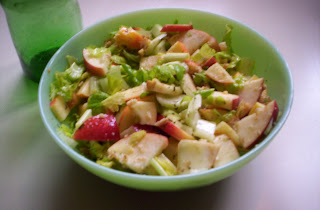Well, D and I finally made good on our pub night promises, and so Latenac and I made about 48 pasties in 4 different varieties. I started with the basic pie and crust recipe from
BarefootKitchenWitch (wonderful site, btw; go browse it!). Her recipe suggests that each batch of dough makes 8 pies, which is a good proportion unless you are trying to make a million pies and only have one afternoon to pull it off. We made 12 smaller pies out of each batch of dough. It was harder to work with and crimp the smaller piece of dough, but the smaller size worked better for a big party. If I make pies again, though, I'll do the recommended 8 pies to a batch.

Okay, so this posting is really about showing off the oven picture and passing on the filling recipes (such as they are). Here we go:
Traditional Beef (pretty much what is says at
BarefootKitchenWitch)
* 1 lb. beef, cut into small pieces (most recipes suggest chuck of some kind, but we used a nice top round)
* potato and rutabega, thinly sliced and then coarsely chopped a few times (otherwise it pokes through the soft dough, especially if you are making smaller pies)
* onion, small dice
* thyme
* salt and lots of pepper
We used a very lean beef, and so we tossed it in 2 Tbs. of melted butter before mixing it all together. (As Jaques Pepin says, you don't have to use butter, but why wouldn't you?) I really just eyeballed this one, but I think you want to see something like a 2-to-3 ratio of meat to vegetable here.
Pork and Apple* 1 lb trimmed pork loin, cut into small pieces
* granny smith apples, peeled and chopped into chunk just slightly larger than the pork
* onion, finely chopped (about 1/4 or a cup, I should think; it's only to accent)
* Herbs de provence (or just some thyme would work, too)
* salt and light pepper
We tossed this in 2 Tbs. of melted butter, too. Why mess around? The proportion of pork to apple and onion should be about 1-to-1.
Lamb and Stilton* 1 lb ground lamb
* 6-8 oz Stilton cheese, crumbled
* 1 medium potato, grated
* 1/2 c chopped parsley
* salt and light pepper
This one actually doesn't need any butter for some strange reason. Easiest to mix this by hand. (Note: We didn't use potato in the original recipe, but I'm adding it here because I think it would make the final product a bit less dense.)
Leek and Gruyere* 3 leeks, thinly sliced
* 1 small potato, grated
* 8 oz gruyere cheese, grated
* 1/2 tsp ground nutmeg
* light salt and pepper
Pies should get a thorough egg wash (beat an egg or two with just a touch of water) before baking. We baked each kind for about an hour, rotating and switching top for bottom pans every 15 minutes (which may or may not have be plain fussiness). The leek pies may not have needed quite that amount of time, but an hour seems to be what the crust wants to turn nice and golden.
I am quite convinced that pies like these are very amenable to experimentation and also quite forgiving. Let me know if you find or taste other interesting varieties.




















